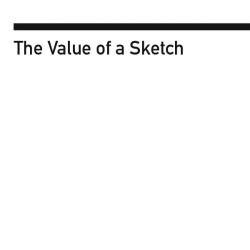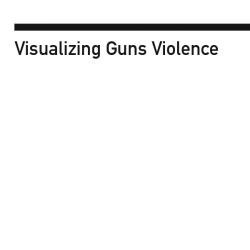Ned Drew's collections
The Value of a Sketch
<p><strong></strong>A design project’s aesthetics and cultural impact are usually the primary consideration as to the effectiveness and quality of a designer's approach to problem-solving. What is often overlooked in these perspectives are the various preliminary approaches that designers employ—how do we visualize and ultimately share our ideas with others?</p>
<p>Within design education, projects are usually conceived to help expose students to the “design process,” an often-complex journey of experiments and discoveries. This process helps guide students in the creation of future successful design solutions. With the progress of the digital experience (PowerPoint presentations, iPhone apps, and Virtual Reality), the art of the sketch seems to be a casualty of the current state of the design process.</p>
<p>What can we learn from a sketch? Is the sketch a dead art form, forever packed away in folders or archives never to be seen again? Or, can we reevaluate its historical contributions in the design process and creation of artful typographic syntax and hierarchy, image creation, and narrative development?</p>
<p> Most often, these small, thumbnail sketches speak only to a limited audience (Art Directors, other designers, or only the designer themselves) and, therefore, usually have a limited impact. But, in the hands of a skilled and creative designer, these sketches can mean the difference between success or failure, the green light, or the idea being squashed.</p>
<p>As a supplement to several educational design projects, this collection attempts to expose students to the value of the simple pencil sketch. How can we use the sketching process to encourage young designers to visualize away from the computer and avoid the digital “sameness” pervasive in our visual world?</p>
<p>This collection attempts to chronicle the process of various designers and their projects (both large and small, complex, and simple) and presents their approach to preliminary ideation through the sketching process. The collection includes thumbnails, photographs, color studies, line reductions as well as the completed project in hopes of revealing <strong><em>The Value of a Simple Sketch.</em></strong></p>
<p>D<strong>esigners/Artist included:</strong></p><p>Willi Kunz, (1943 - ) Swiss-born Kunz, played a significant role in the introduction of the new typography developed from Basel to the United States, where he currently lives and works.</p>
<p>Dan Friedman, (1945–1995) noted American graphic and furniture designer and educator. One of the significant contributors to the New Wave typography movement.</p>
<p>Painter Piet Mondrian (1872–1944) was the leader of the Dutch De Stijl movement, where he implemented an extreme visual vocabulary consisting of planes of primary colors, simplified right angles, and linear accents.</p>
<p>Tom Engeman, (1934 - ), American designer and Illustrator who has designed and illustrated several stamps for the United States Postal Service, including the Flags of Our Nation forever stamps and the 150th Anniversary of the Smithsonian commemorative stamp.</p>
 Ned Drew
Ned Drew
109
Visualizing Guns Violence
<p>At Rutgers University-Newark and within the Graphic Design Program, we offer two courses that focus on community-based (the <strong>Design Consortium</strong>) and research-oriented (<strong>Visual Means</strong>) activities. These classes are part of a larger initiative, and art incubator called Express Newark, where community and the university interact, collaborate and co-create.</p>
<p>In addition to the <strong>DC</strong> and <strong>VM </strong>courses, we offer an advanced design studio course that focuses on unique design applications through the use of the letterpress printing process, also located at Express Newark. This coming spring, I will be teaching the letterpress course, and in the following fall, I will teach the <strong>Visual Means</strong> course. Within both classes, I will be looking to develop different ways of <strong>visualizing gun violence</strong>.</p>
<p>Gun violence is one of the most critical and complex issues we currently face in the United States. Rutgers University has recently created the <strong>New Jersey’s Center on Gun Violence</strong>. The center’s mission looks to “conduct interdisciplinary research on the causes, consequences, and solutions to gun-related violence while respecting the rights of legal, safe gun ownership and use.” Within the <strong>Visual Means</strong> course, I plan to work with researchers from this center on developing ways of visualizing the complicated and overwhelming data disconnect between research and public understanding of gun rights, safety, and violence.</p>
<p>What I plan to do with this Learning Lab is to use it as a repository of images, concepts, facts, texts, and web-based information. In the coming months, I will develop a pedagogical approach that weaves together methods of <strong>research,</strong> <strong>visualization,</strong> and <strong>implementation</strong> into various applications of visual communication and graphic form. The Learning Lab will grow as our knowledge about this subject increases and while documenting our process of <strong>research,</strong> <strong>visualization,</strong> and <strong>implementation.</strong></p>
<p><strong>Research<br /></strong><strong><em>Step 1 - </em>Learning Lab<br /></strong>We will use the Learning Lab as a repository for our impressions and image collections that show the different ways in which guns have been woven into the mythology of America and seen in our collective culture. Using different lenses such as art, film, photography, sculpture, advertising, satirical cartoons, comics, pop culture, propaganda, and protest, my students and I will attempt to take apart and reconstruct our understanding of the many issues surrounding this divisive topic. </p>
<p><strong>Visualization and typographic experimentation<br /></strong><strong><em>Step 2 - Weather Report<br /></em></strong><strong><em>Dan Friedman,</em></strong><em> American, 1945–1995<br /></em>While teaching at Yale University, Dan Friedman developed a teaching method that is still used in many schools today—the Weather Report. Through a series of detailed parameters, students will be asked to create different permutations that experiment with various interpretations and hierarchies. As students advance through this assignment, the limitations are slowly lifted, and students begin to generate solutions that are more and more expressive, dynamic, and experimental. Using this method, students will experiment with various hierarchies and typographic solutions—setting the stage for the letterpress printing process. </p>
<p><strong>Implementation <br /></strong><strong><em>Step 3 - Letterpress process <br /></em></strong>Working with content generated from our research, relevant information, thought-provoking content, quotes, or statistics, students will explore various methods of experimenting with typographic structure and syntax. Using the Learning Lab, students will be exposed to the dynamic work of the Futurists, Constructivists, the Bauhaus, late Modernists, and the explosive typography of the New Wave designers.</p>
<p><strong>Designers would include:</strong></p>
<p><strong><em>Filippo Tommaso Marinetti,</em></strong><em> Italian, 1876–1944</em></p>
<p>The Futurists were known (amongst other things) for the emotive and expressive typography.</p>
<p><strong><em>El Lissitzky,</em></strong><em> Russian, 1890–1941<br /></em>Russian Constructivism who experimented with developing a universal language based on simple shapes and reductive color.</p>
<p><strong><em>Ladislav Sutnar,</em></strong><em> Czechoslovakian, 1897–1976<br /></em>Sutnar’s visual communication often explains complex information and concepts unambiguously and with a spartan efficiency. The Constructivist brought great structure and organization to their typographic messages through minimal means in an attempt to generate a universal visual vocabulary.</p>
<p><strong><em>Herbert Bayer,</em></strong><em> Austrian, 1900–1985<br /></em><strong><em>Jan Tschichold,</em></strong><em> German, 1902–1974<br /></em><strong><em>Max Bill,</em></strong><em> German, 1908–1994<br /></em>At the Bauhaus and through its influences, designers brought together various conceptual approaches to the organization and implementation of articulate typographic applications.</p>
<p><strong><em>Alvin Lustig,</em></strong><em> American, 1915–1955<br /></em>American designer Alvin Lustig (along with Paul Rand, Bradbury Thompson, Lester Beall, Ladislav Sutnar, and others) was instrumental in developing a mature, Modern approach inspired by Europe to American graphic design and typography.</p>
<p><strong><em>Wolfgang Weingart, </em></strong><em>German, 1941–<br /></em>Teaches at the Basel School of Design and separating himself from some of Late Modernist’s more restrictive characteristics while redefining for himself an expressive typographic approach through experimentation and practice.</p>
<p><strong><em>April Greiman</em></strong><em>, American, 1948–<br /></em>Inspired by Armin Hofmann and Wolfgang Weingart and her experiences in Europe at the Basel School of Design, Greiman brought a fresh and unique perspective to graphic design within the United States.</p>
<p><strong><em>Bruce Licher,</em></strong><em> American, 1958–<br /></em>American typographer and letterpress designer that works within the traditions of letterpress printing while pushing the edges of typography, unique form, and graphic design applications.</p>
<p><br /></p>
<p>Professor Ned Drew
<br />Graphic Design Faculty
<br /> Rutgers University-Newark</p>
<p>Founding Director of The Design Consortium & XPress | Center for Typography initiatives at Express Newark<br /></p>
<p><a href="http://www.brednation.com/about-1">Co-Founder<br /></a>BRED | a collaborative design lab<br /><a href="http://www.brednation.com/">www.brednation.com<br /></a>Instagram: bred_letterpress</p>
<p><br /></p>
<p><br /></p>
<p> </p>
<p> </p>
 Ned Drew
Ned Drew
137



